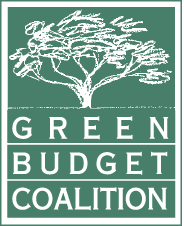Achieving a net-zero emissions electricity system by 2035 is a foundational climate solution that will unlock emissions reductions and affordable energy for other sectors. Budget 2024 saw progress on the Clean Electricity Investment Tax Credit (ITC), including the addition of inter-provincial transmission projects as an eligible category, but funding for the credit was not increased. The new Indigenous Loan Guarantee Program is also a good step, but more is needed to support Indigenous leadership in clean electricity.
Low-income and vulnerable people — including remote and Indigenous communities — must have affordable and equitable energy access as Canada transitions to a clean electricity grid. Siting of renewable installations on traditional Indigenous territories, and reducing reliance on diesel in Indigenous and remote communities, requires special care and attention.
Achieving net-zero electricity by 2035 and modernizing the grid will require strong collaboration among all orders of government, including Indigenous governments, as well as with utilities and system operators. Rapid market transformation necessitates immediate federal funding and clear policy signals for future support.
Demand-side management (DSM) is one of the key strategies that can help address both equity and affordability concerns. Enabling utilities to decrease demand instead of increasing generation gives them more options to operate and plan the grid while making electricity more affordable for consumers. It also makes it easier to integrate more low-cost renewable electricity and storage in the grid, further increasing affordability. It uses incentives or market mechanisms to assign monetary value to the benefits that energy efficiency, demand response, and distributed energy resources offer to utilities and grid operators. Companies and consumers often get paid for participating in DSM programs which adds to their savings.
Canada is a signatory to the International Energy Agency’s commitment to doubling the global average annual rate of energy efficiency improvements to over 4% by the end of this decade, but has the lowest annual energy efficiency improvements among G7 countries. The Canada Electricity Advisory Council also noted in their May 2024 “Powering Canada” report that Canada is lacking investment in DSM and initiatives for modernizing the grid.
The federal government could play a vital role in reducing energy demand and supporting clean electricity generation through the following investments in Budget 2025.
Total Recommended Investment: $32.57 billion over five years
- Interprovincial transmission: $20 billion over five years for strategic interregional transmission projects to support clean electricity infrastructure deployment and system reliability and to top up the existing Investment Tax Credit (ITC), consistent with the Canada Electricity Advisory Council’s recommendations. The ITC should be conditional on securing the support and free, informed, and prior consent of Indigenous communities. [NRCan]
- Strategic support for Indigenous-led and community-led generation: $4.8 billion over five years for investment in clean electricity projects and programs targeted to benefit Indigenous, low- income, and vulnerable communities, with a focus on providing communities the necessary resources to engage effectively in consultation processes. These federal investments should take the form of grants, not loans, wherever possible. [NRCan]
- Indigenous leadership and partnerships: $800 million over five years for programs specifically aimed at building Indigenous leadership and partnerships for clean energy deployment in remote Indigenous communities. Funding programs should be flexible and support Indigenous-led projects that reduce diesel consumption in homes and buildings through deep energy retrofits and through renewable heat and power generation. [Lead: NRCan; Involved: CIRNAC, ISC, HICC]
- $15 million over five years to enable the Smart Renewables and Electrification Pathways Program (SREP) and the Canada Infrastructure Bank to support projects in equity-deserving communities that will help build their capacity and increase access to the programs that would deliver social, environmental, and economic benefits. [NRCan, CIB]
- $355 million over five years to support provinces that have made public commitments to work toward a net-zero grid by 2035 to create plans to achieve that goal. Planning should involve consultation with provincial stakeholders and in partnership with Indigenous governments, as well as broader engagement and collaboration with regional stakeholders, such as governments, communities, regulators, utilities, and system operators in neighbouring provinces and states. [NRCan]
- $6.5 billion over five years allocated to DSM initiatives that reduce customer bills, enable efficient use of grid and generation resources, allow for increased use of distributed energy resources, and lead to incremental emissions reductions. [NRCan]
- $100 million over five years for relaunching the Smart Grid Program for grid modernization, enhancing the resilience and efficiency of the power grid. Launched in 2021, the Smart Grid Program has enabled 21 grid modernization projects across the country. [NRCan]
